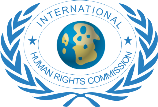Young Volunteers
Members > Volunteers > African Region
Young Coordinator Volunteer in Nigeria

Sulaiman Ashiru
My volunteer work plan that includes:
Goal Objective Desired result Action steps Time frame Supervision Potential resources, people, and partners The world has come a long way in establishing certain rights for all human beings, so that every individual can be treated with a certain level of fundamental dignity. But there remains much work to be done in the field of IHRC in many nations, volunteers will have the rare chance to make a tangible, positive, and lasting impact on foreign communities. Actions speak louder than words, quite literally in the case of IHRC movements, so stand up and take action in whatever area interests you!
The first element of a volunteer work plan has two basic components:
- A volunteer placement goal statement; and
- Specific and measurable objectives. When developing a volunteer placement goal statement one should think about the desired outcome of the volunteer placement. The statement should be clear and concise, and begin with the word “to” followed by an action verb. An objective statement is a specific, measurable condition that must be attained in order to meet the overall volunteer placement goal. For example, if your goal is to develop an after school program, you may have multiple objectives in your volunteer work plan that align with the placement goal. Once you have outlined your volunteer placement goal, and the objectives to achieve that goal, then you can begin to develop action steps.
2. Action steps are steps the volunteer should take in order to achieve the stated objectives. For example, if your objective is to locate a program site, one action step could be to outline site requirements and conduct research based on those site requirements. Action steps guide the volunteer through a process that will help them meet the outlined objectives for their position. Once you have outlined action steps for each objective, you can develop a timeframe.
3. Time frame It is good practice to identify when the volunteer should initiate a task, and when the task should be completed. This information allows the volunteer to know the priority for each action step and plan accordingly.
4. Supervision Make sure to document the volunteer supervisor’s name and contact information on the work plan. If there are regularly scheduled status check-ins with the volunteer and the supervisor, those scheduled meetings can be documented on the work plan as well.
5. Potential resources (i.e. people, partners, technology, financial, etc.) Lastly, look through the work plan objectives and action steps, and document what resources the volunteer will need to complete the tasks and achieve success. These could include staff, financial resources, outside organization contacts, technology, etc. It is important to make sure that individuals listed as resources are contacted and made aware they will need to provide support to the volunteer.






